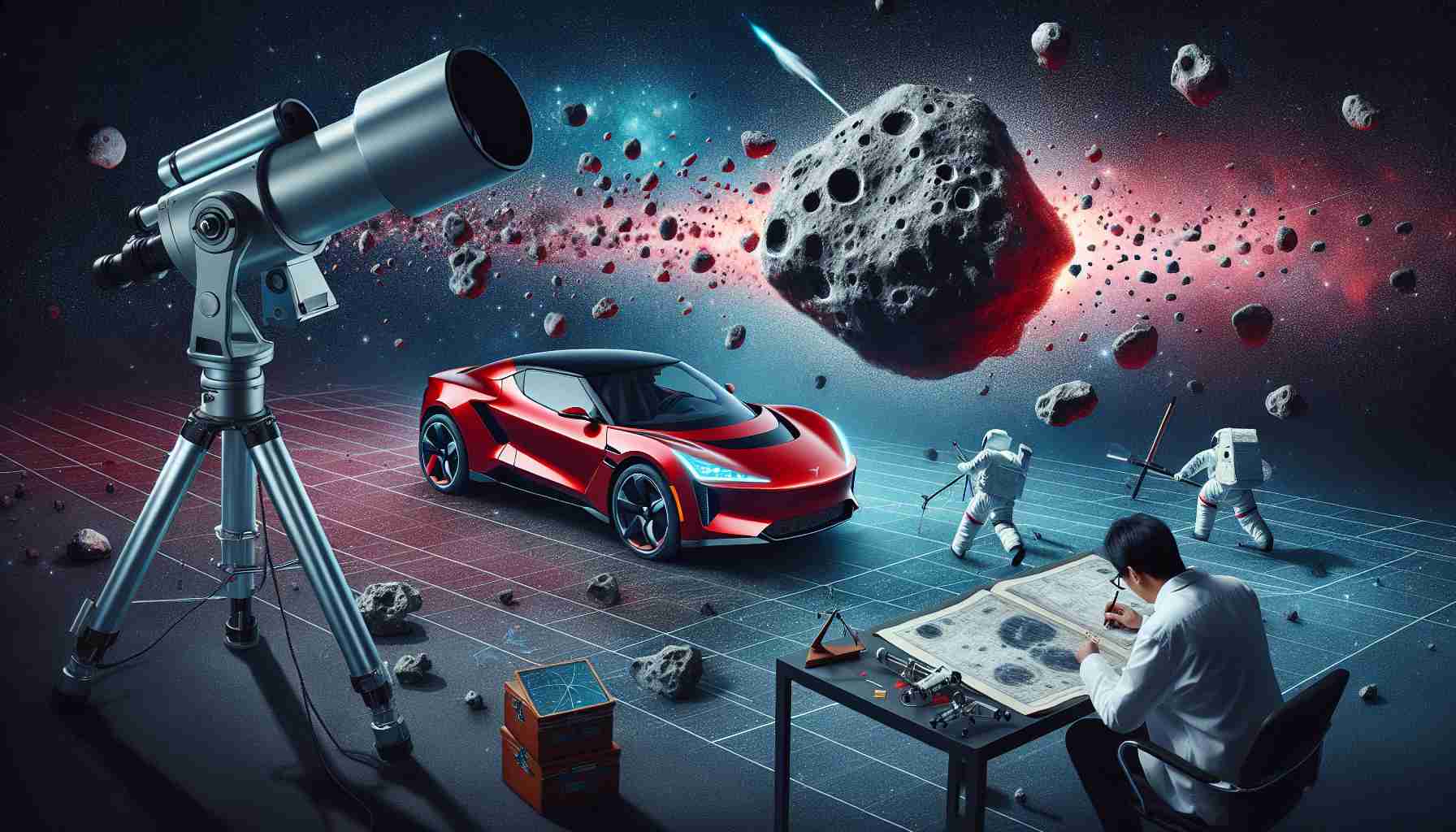The Unintended Asteroid Confusion
In a surprising twist, NASA astronomers recently identified a familiar object registered as an asteroid, only to discover it was Elon Musk’s Tesla Roadster. Seven years after its launch into space, the vehicle was mistakenly listed as a celestial body by the Minor Planet Center at the Harvard-Smithsonian Center for Astrophysics.
This mix-up occurred shortly after the astronomers published the designation 2018 CN41, which was later retracted when they confirmed the object was actually Musk’s vehicle in orbit. The Center’s announcement noted that the object’s trajectory mimicked that of an artificial satellite, necessitating the deletion of the erroneous listing.
Launched in February 2018 aboard the Falcon Heavy rocket, the Roadster was intended to establish an elliptical orbit around the Sun. However, reports indicated it might have ventured further, out towards the asteroid belt. As of this incident, the car was located less than 150,000 miles from Earth—an orbit closer than that of the Moon, raising concerns among astronomers about its trajectory.
Astrophysicist Jonathan McDowell pointed out the pitfalls of tracking unmonitored objects in space. He highlighted the potential inconvenience faced by researchers pursuing space probes designed for asteroids, only to find they are dealing with artificial creations instead. As the quest for space knowledge continues, this incident serves as a humorous reminder of the complexities of space observation.
Astro-Commercialization: Navigating the New Frontier
The recent confusion involving Elon Musk’s Tesla Roadster highlights a crucial intersection between commercial activity and space exploration. As private enterprises increasingly venture into the cosmos, the implications for society extend well beyond occasional humorous misidentifications.
The proliferation of commercial satellites and space vehicles means that our skies are becoming congested with man-made objects. According to the European Space Agency, there are over 36,500 pieces of space debris in Earth’s orbit. This raises urgent questions about space traffic management and the potential for collisions, which could endanger both crewed missions and future satellite operations. As more private companies launch vehicles, a robust regulatory framework will be necessary to ensure safe and sustainable practices.
The cultural impact of such endeavors cannot be overlooked, either. The notion of humanity venturing into space, exemplified by Musk’s ambitious projects, shifts social narratives and fuels public imagination. Yet, it also prompts ethical concerns, such as the accessibility of space exploration and its benefits. While some see the potential for commercial spacecraft as a pathway to tourism and economic growth, others worry about equity and who gets to participate in the final frontier.
Looking toward the future, trends indicate an escalating collaboration between governments and private sectors in space exploration. The ongoing partnership may lead to breakthroughs but also necessitates a collective responsibility to safeguard our celestial environment, ensuring that space remains a domain not just for profit, but also for scientific exploration and cultural enrichment.
When Space Meets Innovation: The Tesla Roadster’s Asteroid Mix-up
Introduction
In what can only be described as an eccentric twist of fate in the world of space exploration, technology and celestial observation met in an unexpected event involving none other than Elon Musk’s Tesla Roadster. Originally launched as a publicity stunt, this vehicle found itself mistakenly cataloged as an asteroid, sparking discussions on the challenges inherent in tracking objects in space.
The Incident: A Misidentification
NASA astronomers recently encountered a noteworthy case of misidentification when an object, designated 2018 CN41, was thought to be an asteroid. However, it was later confirmed to be Musk’s Tesla Roadster, which was launched into space aboard SpaceX’s Falcon Heavy rocket in February 2018. Initially reported as a celestial body, its trajectory was later understood to resemble that of an artificial satellite, which necessitated the retraction of its asteroid classification.
Astrophysics Meets Applied Technology
The confusion surrounding the Tesla Roadster exemplifies the intersection of modern technology and space science. Space objects, both natural and artificial, now coexist in the same tracking parameters, creating complexities for astronomers and researchers alike. Astrophysicist Jonathan McDowell underscored the challenges faced when researchers trying to identify actual asteroids can instead be misled by human-made objects in similar orbits.
Space Object Tracking Challenges
Tracking objects in space presents numerous challenges:
– Identification Accuracy: As space becomes increasingly populated with satellites and debris, the ability to differentiate between natural and artificial bodies is crucial.
– Orbital Dynamics: Objects can change orbits due to gravitational influences from nearby celestial bodies, complicating tracking efforts.
– Data Overload: The sheer volume of data collected by astronomical surveys can lead to oversight and misclassification of objects.
Future Implications: Innovations in Space Surveillance
This incident has put a spotlight on the need for enhanced space surveillance systems. Innovations in technology will likely pave the way for:
– Advanced Tracking Systems: Incorporating AI and machine learning to improve accuracy in identifying and monitoring both natural asteroids and man-made objects.
– Collaborative Frameworks: International cooperation among space agencies to better share data on space objects and mitigate potential risks posed by debris.
Market Trends and Predictions
As space exploration becomes more commercialized, the involvement of private companies like SpaceX in launching vehicles into space will continue to grow. Predictions indicate that the rise in satellite launches will create a corresponding increase in monitoring requirements, prompting advancements in tracking technologies.
Security and Sustainability Considerations
With more spacecraft entering orbit, concerns regarding space debris, satellite collisions, and secure data management are paramount. The space industry may need to adopt practices aligned with sustainability, minimizing the risk of creating additional debris and ensuring safe pathways for future missions.
Conclusion
The amusing case of the Tesla Roadster’s misidentification as an asteroid serves as a reminder of the evolving dynamics in space exploration. As we pursue greater knowledge beyond our planet, the fusion of traditional astrophysics with modern technology will be essential for navigating the complexities of our expanding universe.
For more insights on space technologies and innovations, visit Nasa’s official site.













